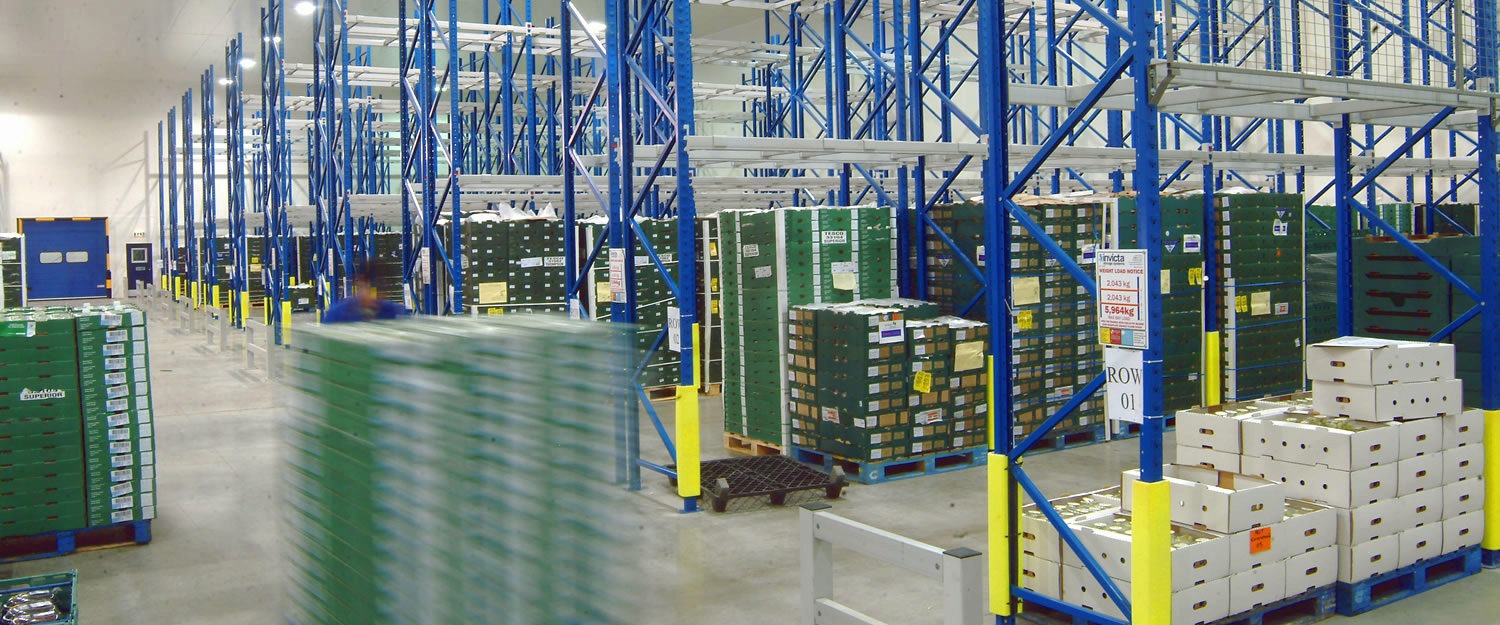For your information
You are being redirected to one of our divisional subsites which contains more detailed information on the required division. To navigate back to the main Invicta Group site, please click the link found in the footer at the bottom of the page.
What on-demand logistics means for warehouses
14th March 2023
Quick Quote
Contact Mick Coyne
To get a quotation or arrange a free site survey - Call Mick Coyne on
-
 UK
UK
Current location:
Quick Quote
Contact Mick Coyne
-
 UK
UK
Current location:
Technology has already had a significant impact on warehousing and logistics, from warehouse management systems to the emergence of autonomous vehicles. A series of new developments promise not just to change the dynamics of logistics, but also to allow smaller businesses to compete with industry giants. Its name? On-demand logistics.
On-demand logistics is a single concept encompassing a number of technological breakthroughs. At its core, it describes a delivery and fulfilment model that minimises delivery times, adapts to the demands of customers, and decreases emissions and waste. But what exactly is on-demand logistics – and what impact will it have on warehouses?
What is on-demand logistics?
On-demand logistics is the idea that the transport of goods – both between warehouses and fulfilment centres, and fulfilment centres and customers – can be optimised by emerging technologies. The aim is to make logistics less of a fixed service running to a definitive schedule, and to make it more reactive. Deliveries will be better tailored to customer demand and truck availability, with customers and clients having more of an influence over the process.
The technologies that can facilitate this have only recently become available. It hasn’t previously been easy or even possible to track every movement of a package or delivery vehicle along its route, let alone to dynamically alter their routes. It has taken the development of mobile internet, sensor technology, and advanced software to effectively track each part of the process, analyse the data, and automate key aspects of decision making.
On-demand logistics also promises a more unified version of logistics, with software that is contiguous between different aspects of the process. The same platform would log and synchronise data from warehouse personnel, drivers and customers, using this to automate decisions, and making it available to relevant personnel. This could not only optimise schedules, but use advanced data such as fuel consumption and vehicle health to predict and mitigate issues.
What are the benefits of on-demand logistics?
The primary benefit of on-demand logistics is to increase efficiency throughout the entire supply chain. While third-party logistics (3PL) providers already offer a level of integration with clients (e.g. connecting to an eCommerce API), their relationship is relatively static. While they may offer brokered or ad-hoc services – where prices vary according to demand – these are not reactive on timescales of hours or minutes.
This is where on-demand logistics differs from the old concept of ‘on-demand transportation’. Rather than saving time and money at the planning stage, on-demand logistics saves it through continual adjustments. Personalised delivery algorithms allow bookings to be made at short notice along the route of each vehicle, picking up and delivering orders on both legs of a journey. This ensures that the vehicle is never empty for the whole of its return leg, saving the logistics provider money – which can then be passed onto the client.
The use of sensors in coordination with on-demand logistics software also allows for instant communication of delays, failed deliveries, or other issues, as well as the communication of changes to the driver. This not only allows for routes to be adjusted dynamically, but also for the status of drivers and vehicles to be monitored. Fuel gauges can be used to factor in fuel stops, while other sensors can measure the wellbeing of drivers and their vehicles, predicting maintenance downtime, and ensuring shift patterns are optimised.
On-demand logistics also involves the collection and analysis of massive amounts of data, both on a micro and macro level. This not only allows for small optimisations and on-demand bookings, but also more systemic changes. Customer data such as locations, the size of shipments, and demand over time can be used to further optimise routes and services, adjusting the number or size of vehicles taking certain routes.
How on-demand logistics could affect warehouses
On the face of it, fulfilment centres and smaller warehouses should be a major beneficiary of on-demand logistics. The ability to fully track and dynamically adjust transit should improve the response time of delivery vehicles, allowing them to pick up orders as they are available, rather than at set times. The additional data provided by both 3PL providers and warehouses should also enhance the ability of both parties to optimise their operations, and cater to real demand, rather than predicted demand.
However, this new model could also pose difficulties in terms of how warehouses currently operate. Intentionally or not, warehouses tend to be designed in a way that facilitates regular, periodic transit. With on-demand logistics, the possibility exists that goods will be shipped much more irregularly, in order to meet customers’ growing demand for same-day delivery. This could require adjustments in warehouse design, from the way items are picked, to the design of the loading and unloading area, to the makeup of the racking.
One of the ways in which racking could be optimised is better prediction of order volumes and regularities. This data would allow for racking to be adapted to hold more of the most popular items, and for these to be placed closer to the loading area, in order to eliminate small inefficiencies in transit time. Combined with the growing success of eCommerce, the increased turnover of goods could also see moves towards higher density racking formats, and specialised vehicles to match these, such as thinner forklifts for narrow aisle racking.
There will also need to be some continuity between the warehouse management system and the logistics management system, as well as the ability for personnel to receive real time order or shipment data, so that they can fulfil these more irregular deliveries. This need to react to a continuous flow of data also introduces the prospect of warehouse automation. Autonomous vehicles, AS/RS racking and other technologies could pick order automatically based on live order tracking, and even move it to the loading area when the vehicle is approaching the warehouse.
–
Investment in on-demand logistics businesses is growing, and eCommerce companies are beginning to utilise their innovations to compete with industry giants such as Amazon, whose speed of delivery is otherwise unattainable. This race to provide goods as quickly as possible promises to drive further expansion of on-demand logistics, boosting 3PL providers, and giving a lifeline to smaller businesses in the fight for online sales.











Share/Like this page